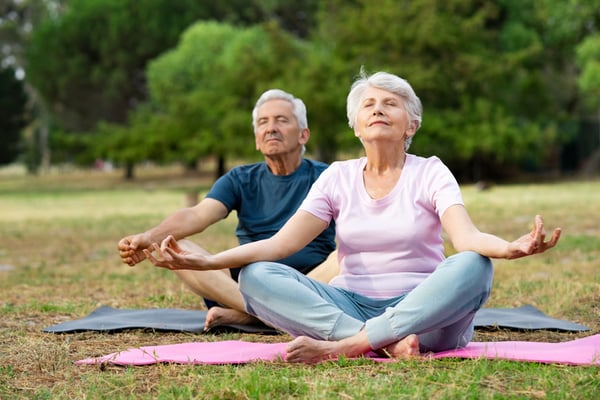Meditation for Older Adults
Walker Methodist | Jun 13, 2019
When was the last time you took a few minutes just to relax and truly be present? For many of us, it’s been a while. So, it’s no surprise that older adults are now turning to meditation to find some self-care and relaxation.
 The idea of meditation can at times seem complicated or simply confusing. You may feel that it means you have to sit in a cross-legged position, arms extended with palms up, breathing in and out for a half an hour or longer. The truth is, the more you learn about meditation, the more you realize how easy it is and the more you can benefit from this simple practice.
The idea of meditation can at times seem complicated or simply confusing. You may feel that it means you have to sit in a cross-legged position, arms extended with palms up, breathing in and out for a half an hour or longer. The truth is, the more you learn about meditation, the more you realize how easy it is and the more you can benefit from this simple practice.
What Is Meditation?
Meditation can refer to any number of techniques designed to help you achieve presence and heightened awareness. It’s often associated with Buddhism, but the western world has adopted it as a way to reduce stress and improve overall mental health. There are two major types of meditation:
Concentrative – This type of meditation has you focusing on one thing, such as your breathing or a chant, with the goal of bringing the mind into the moment by focusing intently.
Mindfulness – Mindfulness is a state of awareness of the present moment to the exclusion of all else. In meditation, awareness refers to clearing the mind so that you can be open to the present moment and things occurring right now.
Benefits for Older Adults
The benefits of meditation affect participants across all age groups, but studies have found particular advantages for older adults. One study found it can decelerate the aging process by slowing down the shortening of telomeres, which can also help reduce your risk of age-related diseases like dementia and heart disease. It not only helps you relax and clear your mind, but it also activates the prefrontal cortex, which can boost your mood.
Learning to Meditate
Don’t be intimidated by claims that you have to meditate for an hour or even 30 minutes at a stretch. You can practice meditation in just 10 minutes a day. In fact, once you get the basics down, you can even meditate while you’re enjoying your morning coffee or waiting for an elevator. If you choose mindfulness meditation, you’ll learn to savor every sensation of the present moment during simple activities, such as washing your hands or doing daily tasks.
Meditation Tools
There are plenty of meditation apps that can guide you through the process, including Calm and Headspace. If you prefer, you can read a how-to guide or book on how to meditate, then put the steps to practice on your own. Basically, you’ll just need to find a comfortable, quiet place to relax, set a time limit, and get started. Don’t become discouraged in the early days as you find your mind wandering repeatedly. That’s only natural. Over time, meditation will start to feel more natural and before you know it, you’ll be a pro.
When it comes to meditation, there’s plenty of flexibility. You just need to learn the basics so that you can create a program that works for you. As long as you’re relaxing and clearing your mind, you’ll begin to experience some of the most important benefits of the practice. In addition to apps and guides, you may be able to find a yoga class that packs in meditation as part of its routine. For some tips on how to be well through the aging process, see our Walker Methodist blog.

